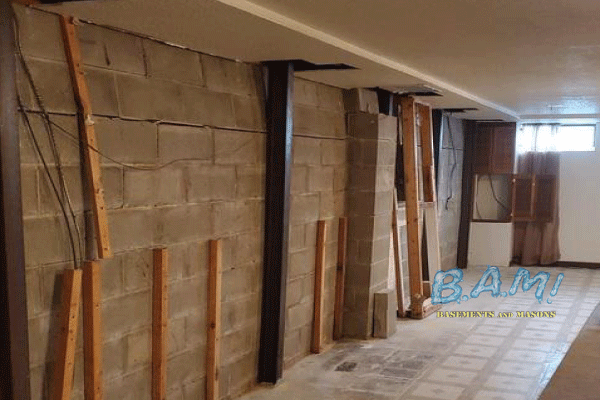Best Basement Waterproofing for Beginners
Best Basement Waterproofing for Beginners
Blog Article
More About Best Basement Waterproofing
Table of ContentsThe smart Trick of Best Basement Waterproofing That Nobody is DiscussingThe Main Principles Of Best Basement Waterproofing An Unbiased View of Best Basement WaterproofingBest Basement Waterproofing Fundamentals Explained
What creates water damages problems in your basement? Pipelines that line the within of your wall surfaces are simply one example of where water damage can occur.The dirt and ground of your home is really crucial. If there is way too much water bordering your home, nevertheless, it can push the dirt into your home and trigger the seals of your basement to come to be compromised. when you see excess water in areas where it should not be, that is a great sign that you have a trouble.
Concrete waterproofing coverings are cement-like; once completely dry, they stick completely to concrete and stonework wall surfaces. You use the coating with a heavy brush made with bristles swirled during application for an appealing, finished look. Concrete water-proof layers can not be used to previously repainted surfaces Silicate-based concrete sealants, likewise understood as densifiers, are likewise appropriate only for wall surfaces that haven't been painted or secured.
The 8-Second Trick For Best Basement Waterproofing
Since these are penetrating sealers, they can't flake off or peel, and you can have paint used over them. The American Eagle team may discover extra difficult causes for your wetness problems; there are extra solutions readily available. Plastic sheets and panels might be combined with indoor basement drain systems. They do not stop water from obtaining via the wall, however they do stop it from wrecking points in the basement.
A sump pump is needed to move water out of your basement. Here are a few things the specialists can mount to assist the waterproofing process: this is made for the walls of your cellar.

It also assists avoid the development of mold - Best Basement Waterproofing or mildew, which can be a rather large carcinogen. Basement waterproofing is a great method to be successful of possible water damages that may come your way. Do not think twice to get in touch with regional specialists, like those at American Eagle with any type of waterproofing concerns you may have regarding what cellar waterproofing resembles and more.
Fascination About Best Basement Waterproofing
When it concerns shielding your home, one of one of the most vital steps you can take is basement waterproofing. A dry cellar not only guarantees a safe and healthy setting for you and your family members, but it likewise aids to protect against expensive water damages and mold read what he said growth. In this article, we will certainly go over the significance of cellar waterproofing, the advantages it offers, and exactly how you can tackle safeguarding your room.

When it pertains to cellar waterproofing, there are a number of methods that can be used to maintain water out of your space. These include indoor sealers, outside waterproofing membranes, and drain systems. The very best approach for your basement will rely on aspects such as the degree of water intrusion, the condition of your structure, and your budget plan.
In conclusion, cellar waterproofing is a critical action in protecting your home from water damages, mold development, and various other problems. By spending in basement waterproofing, you can guarantee that your room remains completely dry, secure, and healthy and balanced for you and your household. Not just does cellar waterproofing give assurance and defense for your home, but it can also raise its value and conserve you money on energy expenses in the future.
Best Basement Waterproofing Things To Know Before You Buy
Interior sealers are a kind of basement waterproofing approach that entails using a sealer to the inside of the cellar walls and floors. Water can leak right into a basement via fractures, voids, or porous concrete, specifically in locations where there is high groundwater or bad water drainage. This can result in water damages and mold growth, along with damages to the structure and architectural integrity of the structure.
It is an effective solution for protecting against water damages and protecting the architectural stability of the structure. Nonetheless, it can be expensive and turbulent to install, as it needs excavation around the structure and may include landscape design and other repair work once the waterproofing is total. However, this technique is the most reliable and resilient service for avoiding water seepage in the basement.
Structure fracture injections are an approach of fixing splits in the structure walls from the inside, without excavating the dirt around the structure. The procedure entails infusing a liquid polyurethane or epoxy right into the splits, which then hardens and produces a water resistant barrier that prevents water from permeating with. This technique is commonly made use of for smaller sized cracks that do not pose an architectural risk, and can be completed quickly and with marginal disturbance to the structure's occupants.
Report this page